Skin diseases increase after days of heavy rain
Statistics from the unit show that in May and the first half of June 2025, at some medical facilities in Ho Chi Minh City, dermatological examinations related to weather factors accounted for about 60% of the total number of visits, an increase of about 20% over the same period last year.
 |
| The dermatologist is examining the patient. |
The reason is believed to be that this year's rainy season came earlier, accompanied by an erratic mix of intense sunshine and heavy rain during the day. Forecasts from the Southern and Central Highlands Hydrometeorological Station said that due to the influence of storm No. 1, the strong southwest monsoon has caused widespread showers and thunderstorms, with some places experiencing heavy rain for several consecutive days.
Some specific patient cases show the extent of the impact of weather on the skin. Ms. PBN (30 years old, Ho Chi Minh City) came to the clinic with itching and red rashes on many areas of the skin such as the face, arms, legs, and thighs.
According to her story, she had just returned from a vacation in Binh Phuoc when the symptoms appeared. The doctor diagnosed her with allergic contact dermatitis, most likely related to the change in environment and the humid, rainy weather. She was prescribed antihistamines, topical medications, and home care as instructed.
Meanwhile, Ms. NTK (40 years old, Ho Chi Minh City), who often gets caught in the rain when coming home from work, started to feel itchy and peeling on her feet, which then spread and developed small blisters with signs of oozing fluid.
Through examination and testing, Dr. Ly Thien Phuc, a Dermatology - Cosmetic Dermatology specialist at Tam Anh General Hospital, Ho Chi Minh City, determined that Ms. K. had a skin fungus infection. The cause was high humidity, shoes and clothes being damp for a long time, creating a favorable environment for fungi and bacteria to grow.
According to Dr. Phuc, in rainy weather conditions, skin folds such as the groin, armpits, neck, and legs are the most vulnerable areas because of sweat accumulation, stuffiness, and difficulty drying.
People with sensitive skin or chronic skin conditions such as eczema or psoriasis are also susceptible to relapse and worsening during this period. In addition, urban rainwater often contains fine dust, chemicals or microorganisms that can cause irritation, rash, itching or secondary infection if not treated promptly.
In some cases, excessive scratching causes the skin to be scratched, making it susceptible to bacterial invasion, leading to inflammation, pus, and requiring intensive medical treatment. In cases of skin fungus like Ms. K.'s, in addition to antifungal topical medications, nutrient iontophoresis technology to help regenerate and soothe the skin is also applied to shorten recovery time. After about two weeks of treatment, her skin condition has improved significantly.
Faced with the increasing number of skin diseases, doctors recommend that people should proactively prevent them by keeping their bodies clean and dry after exposure to rainwater or floodwater.
When wet, you should immediately bathe with clean water and antibacterial soap, change into dry, airy clothes, paying special attention to drying areas prone to moisture such as between the toes, groin, and armpits. Avoid wearing closed shoes if your feet are not completely dry, avoid wearing tight clothes for long periods of time, and absolutely do not share personal items such as towels, socks, and shoes with others.
In case of skin abnormalities such as itching, rash, flaking or redness, people should visit medical facilities with dermatology specialists for proper diagnosis and treatment, avoid self-medication or applying folk remedies that can make the condition worse.
Living with goiter for more than 40 years, patient faces risk of acute respiratory failure
Previously, Ms. Na came to the clinic with difficulty breathing and swallowing for two months. The patient's neck was abnormally enlarged, accompanied by a feeling of heaviness in the chest and choking when eating and talking. The CT scan results showed that the entire thyroid gland was occupied by a large tumor, measuring up to 10x8 cm.
The goiter grows down to the mediastinum, compressing and pushing the trachea to the right, and narrowing the esophagus, a characteristic of mediastinal goiter. This is a benign disease, but can cause serious consequences if not treated early because the goiter grows beyond the neck, compressing important organs in the chest.
Ms. Na shared that she discovered her goiter more than 40 years ago, but because the tumor was small and did not cause any discomfort, she did not seek treatment. 5 years ago, she was advised to have surgery but refused because she was afraid of surgery. It was only when obvious symptoms appeared that affected her daily activities and breathing that she decided to go to the hospital for examination and treatment.
According to Master, Doctor, Specialist I Le Thi Ngoc Hang, Department of Thoracic and Vascular Surgery, who directly treated the patient, Ms. Na's tumor completely changed the anatomy of the neck area, causing the trachea to be pushed from left to right, the esophagus to be compressed, and the airway and food passage to be narrowed.
The tumor is also closely attached to organs and large blood vessels in the mediastinum, increasing the risk of complications during surgery. If left untreated, the patient may face acute respiratory failure, vocal cord paralysis, difficulty swallowing, hoarseness, chronic cough and respiratory infections.
The surgical team, including thoracic and vascular surgeons, consulted carefully to come up with the optimal solution. The "huge" tumor caused abnormal blood vessel proliferation, closely adhering to the surrounding tissues, so the risk of blood loss during surgery was very high.
Although the team had prepared for the possibility of having to open the chest by cutting the sternum to access the tumor, due to the patient's and family's wishes for a gentle surgery, the team decided to try to approach through the neck.
Doctors made a 6cm incision in the neck, carefully separating the tumor from the trachea, esophagus and major blood vessels. After more than 2 hours of challenging surgery, the entire tumor was completely removed without opening the chest.
The total amount of blood lost during the surgery was only about 80 ml, which is within the safe range. The pathological results showed that this was a benign tumor. The patient recovered quickly, without common post-operative complications such as difficulty breathing, bleeding, voice changes or thyroid dysfunction. She was discharged after 3 days.
According to Master, Doctor, Doctor Pham Hung, Department of Thoracic and Vascular Surgery, goiter accounts for about 5-15% of all goiter cases. The main causes are related to iodine deficiency in the diet, multinodular goiter, chronic thyroiditis, thyroid tumors, autoimmune thyroid diseases such as Hashimoto's or Graves', hormonal changes during pregnancy, and genetic factors.
In particular, 15-50% of patients have no obvious symptoms for many years, making the disease often detected late. The tumor is only discovered by chance when having a chest X-ray, ultrasound or CT scan for other reasons.
When the tumor grows large and spreads to the mediastinum, the patient may experience symptoms such as difficulty breathing, difficulty swallowing, hoarseness, wheezing, prolonged cough, feeling of heaviness in the chest or pain when swallowing. If not treated promptly, the disease can cause acute compression of the trachea or esophagus, leading to respiratory failure or dangerous complications that threaten life.
To prevent goiter and thyroid diseases, experts recommend that people maintain a diet rich in iodine and avoid overusing foods that inhibit thyroid activity such as cruciferous vegetables (kale, cauliflower, cabbage), soybeans and peanuts.
Regular health check-ups are recommended, especially if there is a family history of the disease or any unusual symptoms in the neck area. Early and thorough treatment of thyroid diseases will help prevent the goiter from spreading to the mediastinum, avoiding complicated interventions and risks later.
Detect stage 0 breast cancer from signs of breast pain after menstruation
Ms. CTH (41 years old, Dong Thap ) came to the hospital with persistent right chest pain. Master, Doctor, Specialist I Huynh Ba Tan was the one who directly examined her and discovered a small mass, the size of a green bean, located near the armpit.
The tumor was hard to the touch, with unclear boundaries, raising suspicions of breast cancer. Ms. H. said that the chest pain had lasted for about three months, although it did not coincide with her menstrual cycle. Thinking it was a normal symptom, she did not go to the hospital for a check-up until her daughter urged her to.
Mammography results showed a tumor about 1 cm in size, with irregular borders and many blood vessels. A core needle biopsy was performed, confirming that it was stage 0 breast cancer. Ms. H. was quickly scheduled for conservative surgery to remove the entire tumor and about 2 cm of surrounding healthy tissue.
The results of the axillary lymph node biopsy showed that the malignant cells had not metastasized. After removing the tumor, the patient's chest was left with a 3cm wide tissue defect. The doctors used a local tissue flap to cover this gap, helping to prevent the breast from being sunken and maintain its aesthetic appearance.
The surgery went smoothly. After 12 hours, Ms. H. was able to leave the hospital in a healthy condition, without pain or complications. The cross-section of the tissue around the tumor did not show any cancer cells, however, to prevent the risk of recurrence, the doctor prescribed additional radiation therapy.
Stage 0 breast cancer is the earliest stage of the disease, when malignant cells are only localized in the lining of the milk ducts and have not invaded the surrounding breast tissue.
If detected and treated properly at this stage, the chance of cure is almost absolute. However, if not intervened promptly, cancer cells can spread to surrounding tissues, making treatment in later stages more complicated and prolonged, including extensive surgery, chemotherapy, radiotherapy, endocrine therapy or a combination of methods.
Breast-conserving surgery, which involves removing the tumor and surrounding tissue of about 1-2 cm, is applied to early-stage cancer cases, helping to preserve most of the breast.
According to doctors, for stage 0 breast cancer patients, if treated with conservative surgery combined with subsequent radiotherapy, the survival rate and chance of recovery are equivalent to those with total mastectomy.
Notably, stage 0 breast cancer often has no obvious symptoms and is mostly only detected during screening. A few cases have signs such as palpable lumps, nipple discharge, unusual breast pain, etc.
Therefore, doctors recommend that women should have regular breast examinations, especially annual breast cancer screening after the age of 40. For young women, even without risk factors or family history, it is necessary to monitor breast health regularly, especially when there are any abnormalities such as pain, swelling, changes in shape, discharge or lumps.
Doctors also note that there are many causes of breast pain such as hormonal changes, breast trauma, wearing tight bras, and mastitis during breastfeeding.
During the menstrual cycle, hormones can cause breast tissue to swell, causing mild pain about a week before your period. However, if the pain persists after your period ends or is unrelated to your period, you should see a doctor to rule out more serious causes such as cancer.
Source: https://baodautu.vn/tin-moi-y-te-ngay-176-gia-tang-benh-da-lieu-sau-nhung-ngay-mua-lon-keo-dai-d306130.html












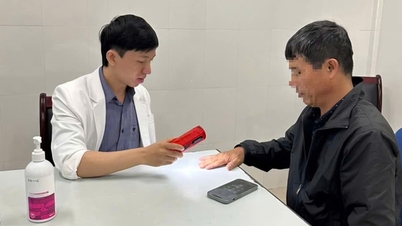


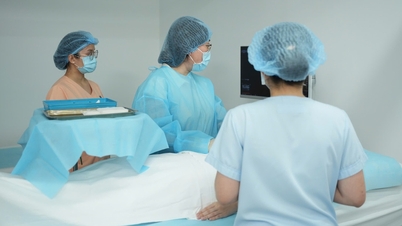

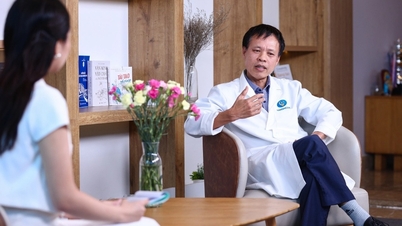



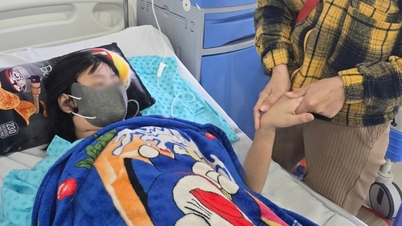



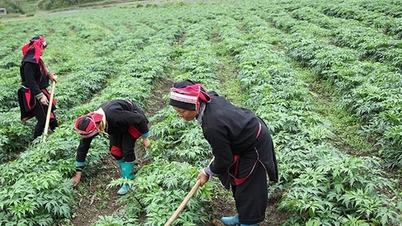








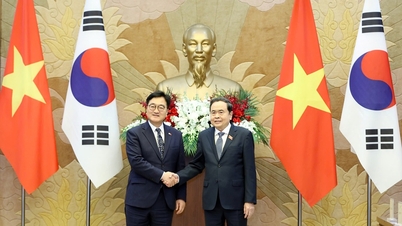



































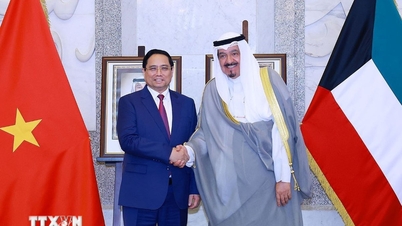










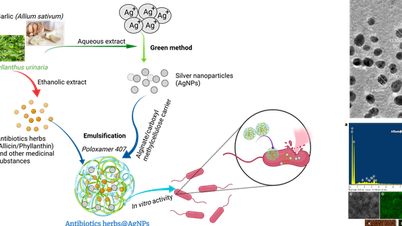



























Comment (0)